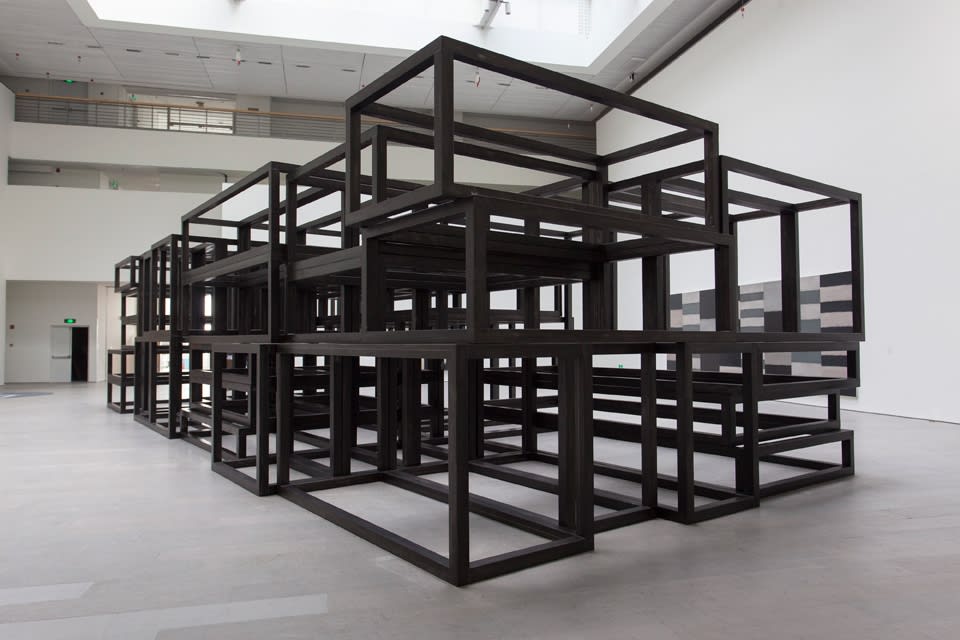
Follow the Heart: The Art of Sean Scully, 1964–2014, London, New York

Given that more than 100 of Scully’s artworks are gathered together in property developer Dai Zhikang’s privately funded museum, there is no other way of describing this exhibition than as ‘major’. If that seems like a quick descent into PR-speak, then it should give you a taste of how this show (curated by Philip Dodd) is framed. It is littered with wall texts that attempt to ‘connect’ the artist’s work to a Chinese audience. We learn that Scully read Fritjof Capra’s The Tao of Physics (1975) during the 1980s, has a black belt in karate and that his black-and-white works resonate (somehow) with Chinese ink painting. We even get a celebrity endorsement in the form of Bono’s (in his guise as a collector) thoughts on Scully’s work. No mention, of course, of Ai Weiwei, whom Scully taught at Parsons School of Design in New York during the 1980s. All of which proposes the question of to what extent you can ignore the most obvious context of this show (which is housed in a gallery surrounded by a five-star hotel, a shopping mall and, on my November visit, a soon-to-be-opened Germanstyle Christmas market): that of a celebrated artist trying to conquer an Asian market.
Curiously then, given Scully’s reputation as one of Europe and America’s foremost abstract painters, the centrepiece of the exhibition is not a painting, but a sculpture, China Piled Up (2014). It is inspired, apparently, by China’s status as the steel capital of the world. You’ll not be surprised to learn that it comprises a series of boxlike steel frames that offer a geometry not unlike that of the wooden shipping crates in which Scully’s paintings travel. They present the viewer with a maze of different, alternate perspectives and passageways through the whole. It seems an open structure, despite its obvious cagelike form. A double-sided or ironic take on China? It’s certainly the kind of wit of which the rest of what’s on show suggests Scully – who can come across as an austere and strict abstractionist – is capable.
The exhibition itself is arranged broadly chronologically (allowing it to be further animated by the artist’s biography), moving from early Fauvism-inspired figurative works, through to experiments with geometric units of colour during the 1970s, more bricklike units culminating in the Wall of Light paintings started during the late 1990s, and more recent series, among them the artist’s Doric works. The paintings in the latter series (such as Doric Proteus, 2013), which came into being around the time Greece was sliding towards financial ruin, comprise ordered grids of weirdly colourful greys, whites and blacks that evoke the same sort of tension between freedom and constraint as the exhibition’s central sculpture.
In the end, however, it’s one of the smaller rooms, featuring a packed display of photographs – of shacks, peeling walls, doors and doorways – and works on paper that is the most fascinating. Clearly grounding Scully’s compositions, with their focus on geometry, light and texture, in lands (Morocco, Mexico, the Dominican Republic) and human landscapes. Even if certain aspects of the presentation (not Scully’s work itself) seem like an overcooked marketing exercise (of course every exhibition is to some degree an exercise in marketing or positioning), the work on show here is strong enough to rise above that and tell its own, surprisingly human, story.
This article was first published in the March 2015 issue.